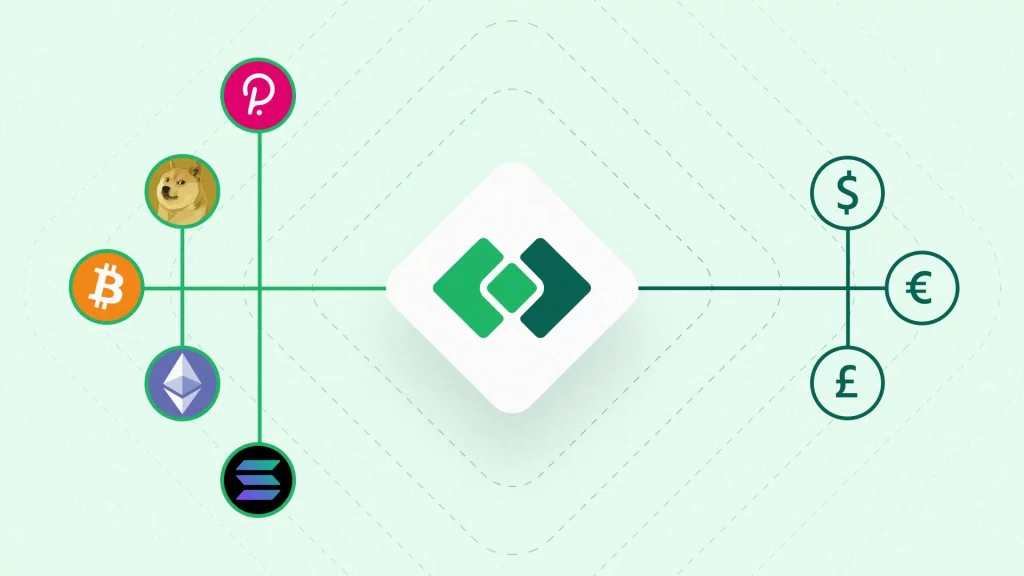Importance of Crypto On-Ramp and Off-Ramp Solutions; Crypto on-ramp and off-ramp solutions play a vital role in cryptocurrencies’ overall adoption and usability. Before we fully dive into the importance of Crypto On-Ramp and Off-Ramp solutions, it is important to understand these terms.
What Is Crypto On-Ramp?

A cryptocurrency on-ramp serves as a gateway or platform where individuals can exchange their fiat money for cryptocurrencies. It is the initial step for many people who want to enter the world of digital assets. However, not all on-ramps function in the same way.
The most popular option for purchasing cryptocurrencies is through exchanges. While not all exchanges support direct fiat purchases, many well-known exchanges do, and more are continuously adding this feature. Additionally, there are over-the-counter (OTC) markets where users can trade directly with each other at agreed-upon prices, which may not align precisely with the exchange rate. Various platforms offer OTC services, but they are often utilised for larger transactions and are more commonly used by institutional buyers. Exchanges and OTC services frequently provide APIs that can be integrated into other applications, facilitating advanced users in trading across multiple markets.
Another commonly used on-ramp is cryptocurrency ATMs, where users can physically deposit cash and receive digital assets in return. However, availability may vary across different cities, and the selection of cryptocurrencies offered at these ATMs can be limited, potentially creating inconvenience for users.
What are Crypto Off-Ramps?
Cryptocurrency off-ramps play the opposite role of on-ramps by providing a means to convert cryptocurrencies back into fiat currency or other products and services.
Just as users need fiat currency to enter the cryptocurrency market, they also require options to exit their digital assets. This can involve converting cryptocurrencies back into fiat, which remains the primary form of payment in most parts of the world, or using cryptocurrencies to make purchases of goods or services. While the ability to transact with digital assets is considered the ultimate goal by many, most users primarily seek a straightforward method to convert their value back into traditional currencies.
Many exchanges like Astro Africa and ATMs that act as on-ramps also serve as off-ramps. However, it is important to note that exchanges may have specific limits on the amount of cryptocurrency that can be withdrawn from the platform within a given time frame, such as a day, week, or month. Therefore, it is essential to review the account details to understand any restrictions when utilizing this method.
On the other hand, OTC trading is designed for larger transactions and supports both buying and selling, but it may not be as accessible or practical for smaller investors. For users looking to use their cryptocurrencies for purchases, the options are gradually expanding. While some businesses are beginning to accept digital assets as payment, this practice is still relatively uncommon. Alternatively, using a service that allows funding of payment cards with digital assets can be a more practical solution, although it is important to be aware of any associated high fees depending on the service provider.

Also read: What Is Liquidity Mining In Defi?
Importance Of Crypto On-Ramp and Off-Ramp
Crypto on-ramp and off-ramp solutions play a vital role in cryptocurrencies’ overall adoption and usability. Here are some key reasons why these solutions are important:
1. Accessibility: On-ramp solutions enable individuals to easily enter the world of cryptocurrencies by providing convenient and user-friendly methods to convert fiat currencies (such as USD, EUR, etc.) into cryptocurrencies. Similarly, off-ramp solutions allow users to convert cryptocurrencies back into fiat, providing easy access to traditional financial systems.
2. Market Liquidity: Crypto on-ramp solutions contribute to market liquidity by bringing in new capital and increasing trading volumes. This liquidity is essential for healthy price discovery and efficient market operations.
3. Integration with Traditional Finance: On-ramp and off-ramp solutions bridge the gap between traditional financial systems and cryptocurrencies. They enable seamless integration, allowing individuals and businesses to easily transition between crypto and fiat currencies, fostering wider acceptance and adoption.
4. Regulatory Compliance: Reliable on-ramp and off-ramp solutions adhere to regulatory requirements, such as Know Your Customer (KYC) and Anti-Money Laundering (AML) regulations. This helps to prevent illicit activities and ensures a more secure and compliant environment for users.
5. User Experience: Smooth on-ramp and off-ramp processes enhance the overall user experience by reducing friction and simplifying the process of buying or selling cryptocurrencies. This encourages more individuals to participate in the crypto ecosystem.
5. Financial Inclusion: On-ramp solutions have the potential to promote financial inclusion by providing access to cryptocurrencies to individuals who may not have access to traditional banking services. This can empower people in underserved regions and contribute to more inclusive economic opportunities.
In conclusion, crypto on-ramp and off-ramp solutions are essential for creating a seamless and user-friendly experience in the cryptocurrency space. They facilitate the conversion between fiat and cryptocurrencies, enhance market liquidity, foster regulatory compliance, and contribute to the wider adoption and integration of cryptocurrencies into mainstream finance.














